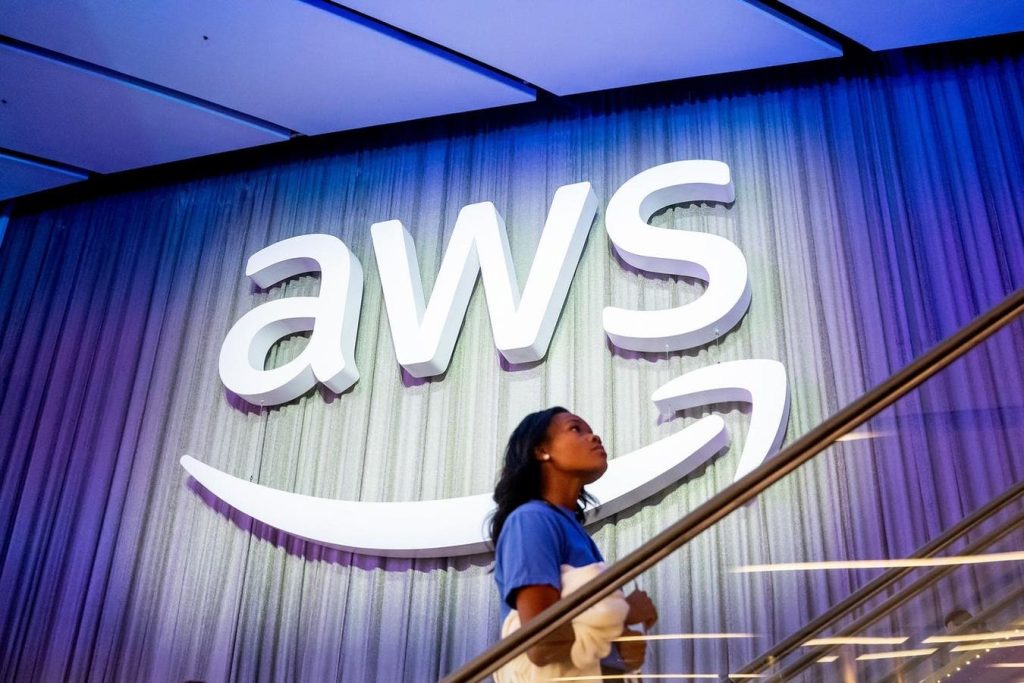Amazon’s stock performance in 2023 has been remarkable, boasting a near 50% surge, outpacing tech giants like Apple and Alphabet. This success can be attributed to several key factors, including shrewd investments in e-commerce infrastructure, a thriving advertising business, and its strategic positioning in the burgeoning generative AI landscape. The company’s operational profits are surging, demonstrating the effectiveness of its long-term vision and execution. The market perceives Amazon as a significant beneficiary of the AI revolution, particularly through its robust cloud computing division, AWS. This positive momentum contrasts with some of its competitors, such as Google, which, despite announcing a potential technological breakthrough, hasn’t seen the same stock market gains.
A significant development in Amazon’s AI strategy is its commitment to developing proprietary AI chips. The recently unveiled Trainium3, touted as twice as fast and significantly more energy-efficient than its predecessor, is scheduled for release in 2025. This investment in cutting-edge technology signifies Amazon’s ambition to not only optimize its own operations but also potentially disrupt the AI chip market. The success or delay of this project holds significant implications for the company’s stock price, adding an element of volatility to its future performance. Simultaneously, Amazon is actively marketing its existing AI products to other tech behemoths, including Apple, which already utilizes Amazon’s chips for specific tasks. Furthermore, the announcement of a massive AI supercomputer built with Trainium2 chips underscores Amazon’s aggressive pursuit of AI leadership. This vertical integration strategy, while not necessarily displacing its reliance on Nvidia GPUs, positions Amazon to reduce AWS costs and potentially generate new revenue streams by offering its chip technology to external clients.
Beyond its core e-commerce and cloud computing businesses, Amazon is strategically expanding into the automotive sector with the launch of Amazon Autos. This new venture, initially focusing on selling new vehicles in partnership with Hyundai, leverages Amazon’s extensive customer base and aims to capitalize on consumer dissatisfaction with traditional car dealerships. While Amazon’s experience in the auto industry is limited, its brand recognition, logistical prowess, and customer-centric approach could disrupt the existing market dynamics. The phased rollout of Amazon Autos, gradually incorporating more brands and expanding to additional cities, indicates a measured approach to penetrating this new market. The success of this venture will depend on its ability to seamlessly integrate into the complex automotive ecosystem and provide a superior customer experience.
Analyzing Amazon’s stock performance over a broader timeframe reveals both significant growth and inherent volatility. While delivering an impressive 81% return in 2023, it experienced a substantial 50% decline in 2022, highlighting the potential risks associated with investing in individual stocks. This volatility contrasts with the more stable performance of diversified portfolios like the Trefis High Quality Portfolio, which consistently outperformed the S&P 500 over the same period. Diversification across a range of high-quality stocks offers investors a smoother ride and potentially better risk-adjusted returns compared to concentrating investments in a single company, even one as successful as Amazon.
Despite its historical tendency to trade at extreme price-to-earnings ratios, Amazon’s valuation metrics are showing signs of normalization. Currently trading at approximately 35 times its 2025 consensus earnings, the stock appears reasonably valued, especially considering the company’s improving margins and growth potential. Amazon’s cost management initiatives, including a more cautious hiring approach and enhanced operational efficiency, have contributed to a significant increase in profitability, particularly within its cloud division. Furthermore, the company’s strategic shift in capital expenditure, prioritizing investments in technology infrastructure to support AI initiatives over lower-return e-commerce infrastructure, demonstrates a forward-looking approach.
Amazon’s current market price aligns closely with the Trefis price estimate, suggesting that the market recognizes the company’s intrinsic value. This convergence of market price and estimated value, combined with the company’s strategic initiatives in AI, cloud computing, and automotive, positions Amazon as a potentially attractive investment. However, the inherent volatility of the stock market and the specific risks associated with technological advancements, as well as the competitive landscape, should be carefully considered by potential investors. Diversifying investments across a portfolio of high-quality stocks can mitigate these risks and potentially provide more stable returns over the long term. Amazon’s future performance will hinge on its ability to execute its ambitious strategies, navigate evolving market conditions, and effectively compete in an increasingly dynamic technological landscape.










